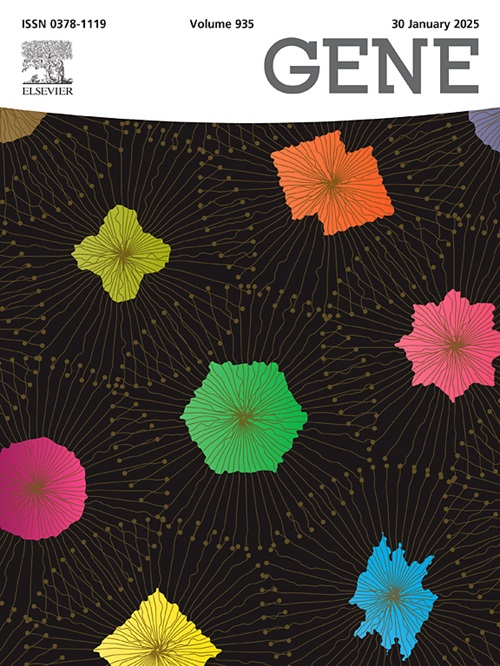TSPEAR S475TfsX79突变不影响小鼠的听觉功能、牙齿形态和毛发发育
IF 2.4
3区 生物学
Q2 GENETICS & HEREDITY
引用次数: 0
摘要
TSPEAR是EAR(癫痫相关重复)蛋白家族的一员,功能不明确。一些证据表明,人类TSPEAR基因的突变与听力损失或外胚层发育不良有关。虽然在Tspeara-/-;Tspearb-/-敲除斑马鱼模型中观察到牙齿异常和尾鳍再生能力下降,但迄今为止还没有关于Tspear敲除小鼠模型的报道,这阻碍了对其生理作用的进一步研究。在这里,我们使用CRISPR/ cas9介导的基因组编辑使小鼠的Tspear基因失活。有趣的是,TSPEAR S475TfsX79突变小鼠的立体纤毛形态和听觉功能未受影响。同样,牙齿形态和毛发发育在这些突变体中没有改变。然而,S475TfsX79突变似乎扰乱了Notch和Wnt信号通路。具体来说,Notch1和几个下游靶基因下调,而Heyl在皮肤中的表达上调。此外,Wnt4在皮肤和内耳中的表达均升高。总之,我们的数据表明,TSPEAR S475TfsX79突变不会损害小鼠的听觉功能、牙齿形态或毛发发育,但TSPEAR可能同时调节小鼠的Notch和Wnt信号通路。本文章由计算机程序翻译,如有差异,请以英文原文为准。
TSPEAR S475TfsX79 mutation does not affect auditory function, tooth morphology or hair development in mice
TSPEAR is a member of the EAR (epilepsy-associated repeat) protein family with poorly characterized function. Several lines of evidence suggest that mutations in the human TSPEAR gene are associated with hearing loss or ectodermal dysplasia. Although tooth abnormalities and a reduced capacity for caudal fin regeneration were observed in the Tspeara-/-;Tspearb-/- knockout zebrafish model, there have been no reports of the Tspear knockout mouse model to date, which hampers further investigation of its physiological role. Here, we inactivated the Tspear gene in mice using CRISPR/Cas9-mediated genome editing. Intriguingly, stereociliary morphology and auditory function remain unaffected in TSPEAR S475TfsX79 mutant mice. Similarly, tooth morphology and hair development are unaltered in these mutants. Nevertheless, the S475TfsX79 mutation appears to perturb both Notch and Wnt signaling pathways. Specifically, Notch1 and several downstream target genes are downregulated, whereas Heyl expression is upregulated in the skin. Additionally, Wnt4 expression is elevated in both the skin and inner ear. In conclusion, our data demonstrate that TSPEAR S475TfsX79 mutation does not compromise auditory function, tooth morphology, or hair development in mice, but TSPEAR may modulate both Notch and Wnt signaling pathways in the mouse.
求助全文
通过发布文献求助,成功后即可免费获取论文全文。
去求助
来源期刊

Gene
生物-遗传学
CiteScore
6.10
自引率
2.90%
发文量
718
审稿时长
42 days
期刊介绍:
Gene publishes papers that focus on the regulation, expression, function and evolution of genes in all biological contexts, including all prokaryotic and eukaryotic organisms, as well as viruses.
 求助内容:
求助内容: 应助结果提醒方式:
应助结果提醒方式:


